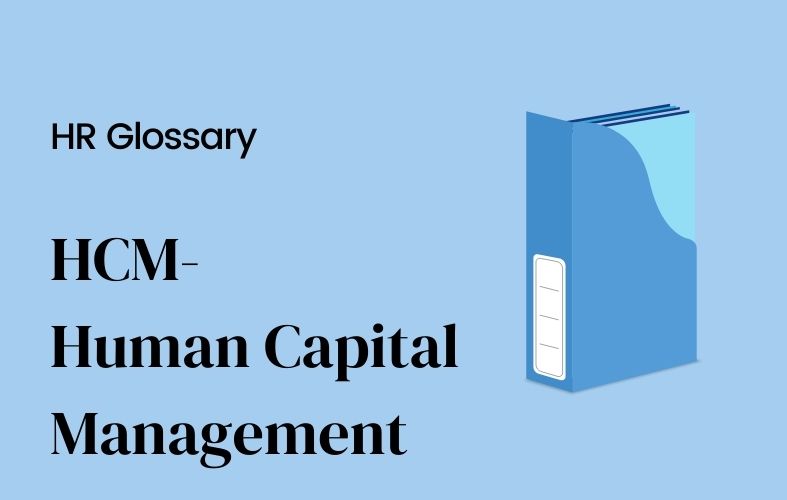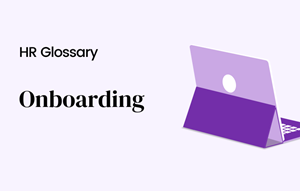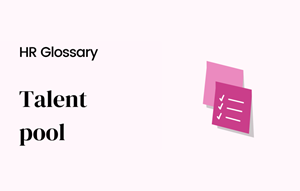Human Capital Management (HCM)

[Sommaire]
What is Human Capital Management (HCM)?
Human Capital Management, often shortened to HCM, is the collection of practices used by an organization for recruiting, developing, and managing employees to increase their productivity.
Human Resource Management (HRM) is more concerned with the administrative element of managing employees. While HCM is a broader term that encompasses Human Resource Management as well as a more strategic role.
Workforce management software, sometimes referred to as a human resource information system (HRIS), can make many of the business processes needed for effective Human Capital Management easier and more streamlined.
Why is Human Capital Management (HCM) important?
By making human resources management a priority in your organization, you can improve the success of your business through :
- Higher productivity
- Lower employee turnover
- Better employee engagement
- Improved product quality or customer experience
- Improved workplace safety
- Lower absence rates
- Better employee health.
What are the functional components of HCM solutions?
Most Human Capital Management software solutions will offer some combination of the following modules:
- Applicant Tracking System (ATS): This module helps organizations post job openings, track and manage applicants, and evaluate candidates. It can also help with onboarding new hires.
- Core HR: This module includes the basic functions of HR Management, such as tracking employee information, benefits, and payroll.
- Employee Self-Service (ESS): This module gives employees the ability to view and update their own HR processes information. It can also include features such as the ability to request time off or submit expenses.
- Learning Management System (LMS): This module helps organizations plan, deliver, and track employee training.
- Performance Management: This module helps organizations set employee goals, track progress, and provide feedback.
- Talent Management: This module encompasses a variety of functions such as succession planning, workforce planning, and career development.
Choosing the right employee management solution for your organization can be complex. There are many factors to consider, such as your organization's size, your employees' needs, and your budget. However, making Human Capital Management, a priority can positively impact your business.
How can you improve business performance with human capital management (HCM)?
HCM is an important element of strong business performance due to the way it relates to every element of the way your employees work. By growing and developing your employees to help them reach their potential, you will be able to strengthen your business.
Link human capital goals with the broader organizational strategy
By matching human capital management system goals to a wider company strategy, you can start delivering the right support in the right places. This might include talent selection for a new project, strengthening company culture by better-communicating company values, or improving productivity to contend with cost pressure from an uncertain supplier marketplace.
Implementing a performance management system
Effective performance reviews can help identify employee strengths and potential for development. By doing this and by tying individual goals to broader organizational goals, you can start identifying opportunities to help improve your employee performance and show that you reward employees on merit, not length of service.
What is more, because good performance reviews deliver feedback and guidance on soft skills as well as technical abilities, you will be developing a higher-performing team that’s resilient as well as capable.
Use data to understand underlying trends
By using employee data, it is possible to analyze trends that might otherwise not be apparent. And this can give you an insight into changes you can make to support organizational goals and respond to changing workplace demographics and expectations.
This might include revisiting your organization’s well-being strategy in order to address absenteeism and presenteeism levels or better communicating flexible working policies to ensure employees feel able to request flexible work to support their lifestyle.
Prioritize career development
You can better serve organizational goals by supporting employees to achieve their career goals. It is only by asking employees what their career aspirations are and then by supporting them to achieve those goals through training and mentoring that you can create an internal talent stream to fill your future business’s needs.
And as an added benefit, employees who feel supported to achieve their career goals are more likely to remain with their employer – after all, why would they go to another employer if they can achieve their aspirations with you?
What is HCM software?
HCM software is a tool that helps businesses manage their workforce capital. It includes all the people who work for the organization, from entry-level employees to the CEO.
The software includes modules for core HR functions such as payroll and benefits administration and modules for more strategic Human Capital Management functions such as talent management and workforce planning.
It can be delivered as a cloud-based solution or an on-premise solution. Cloud-based solutions are typically subscription-based, while on-premise solutions require a one-time license fee.
When choosing your software, it is important to consider your organization's specific needs. For example, if you have a widely dispersed workforce, you will need a solution that can be accessed from anywhere. If you have a large workforce, you will need a solution that can scale to support your employee population.
Once you have identified your organization's specific needs, you can evaluate HCM software solutions. Many vendors offer developed software, so be sure to compare features and pricing before making a final decision.
When evaluating HR data software solutions, you should look for a solution that offers the following features:
- Payroll and benefits administration
- Talent management
- Workforce planning
- Employee self-service
What is the future of HCM?
The future of Human Capital Management is data-driven and predictive. By harnessing the power of data, businesses will be able to make more informed decisions about their workforce. In the future, HCM software can provide real-time insights into employee performance and predict when an employee is likely to leave the organization.
This data-driven approach will help businesses to retain their top talent and reduce turnover. Additionally, data can be used to identify training and development needs within the workforce.
In the future, HCM software will continue to evolve and become more user-friendly. New technologies such as artificial intelligence and machine learning will also be integrated into HCM software to provide even more insights into the workforce.


